Wish you had the ability to leap tall buildings in a single bound? Superman sets the bar pretty high as the ultimate parkour athlete. Honestly, who hasn’t dreamed of being able to jump onto a ridiculously high surface or float a across a massive chasm?
Next to gaining some inhuman superpower, working to develop explosive leg strength is the most surefire way to increase your jumping ability. And, what is the best way to develop explosive lower-body power? Plyometric training.
By now, everyone is familiar with the term plyometric training as it relates to jump training, but let’s go over a brief review for the fun of it. Plyometric work is defined as an explosive movement that minimizes contact with the ground during landing and takeoff. For jump training to be truly plyometric, the time from transition from the eccentric (lengthening) to the concentric (shortening) phase of a muscle contraction should be as short as possible. Jump, land, and rebound back into the air as quickly and high as possible – that’s the basic format.
Repetitive tuck jumps in which you minimize how deep you drop into a squat upon landing are the most fundamental type of plyometric training you can do. Box jumps and depth jumps are two variations that start to introduce an obstacle into the mix. For a box jump, you face off with a box or bench and jump up and down as fast as possible. In a depth jump, you step forward off of box or bench, land briefly on both feet and then spring up and away from the box as fast as possible. If you haven’t tried those three basic plyometric variations, then get to work. They are fundamental to improving your jumping ability.
Want more? Here are three additional skills derived from parkour that are also great for building explosive leg strength:
3 Parkour Skills for Developing Explosive Leg Strength
1. Stride
The stride is a skill where you propel yourself forward along the ground, bounding from one leg to the other. Perhaps you’ve seen videos of athletes leaping across picnic benches from one leg to another? That is striding, and it can be applied to running across any number of elevated obstacles that are spread many feet apart.
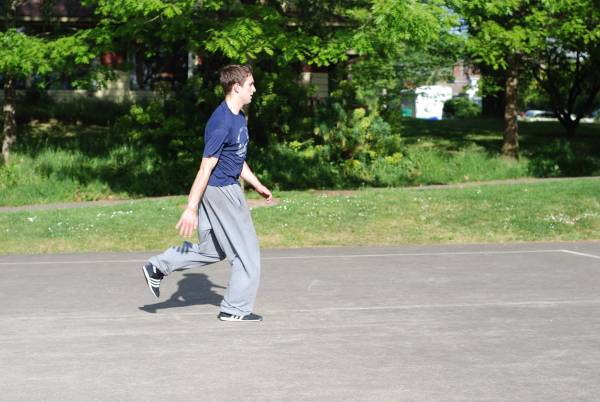
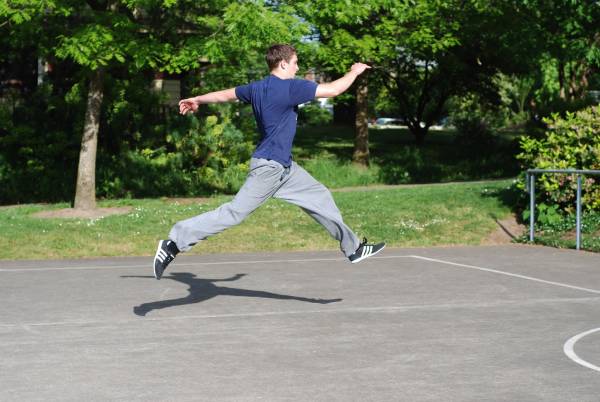
To train strides, simply try to cover a set distance on the ground in as few steps as possible. Run up to a starting mark and then begin to leap from one leg to the other with as minimal contact with the ground as possible. Be light on your feet and try to make as little sound as you can. Spring forward as quickly as you can, reaching through your free leg and pumping hard with your arms.
2. Plant Plyos
The plant plyo is similar to a box jump, but you place your hands on the top surface of the obstacle and push down through your arms to gain extra height. It’s a great skill for training on a box or a low wall that is higher than you comfortably jump onto with just your legs.
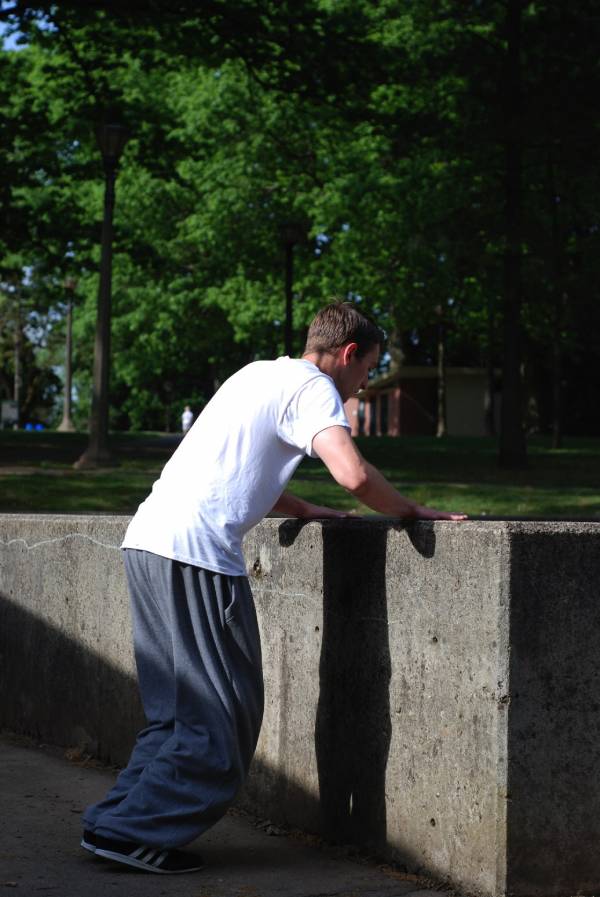
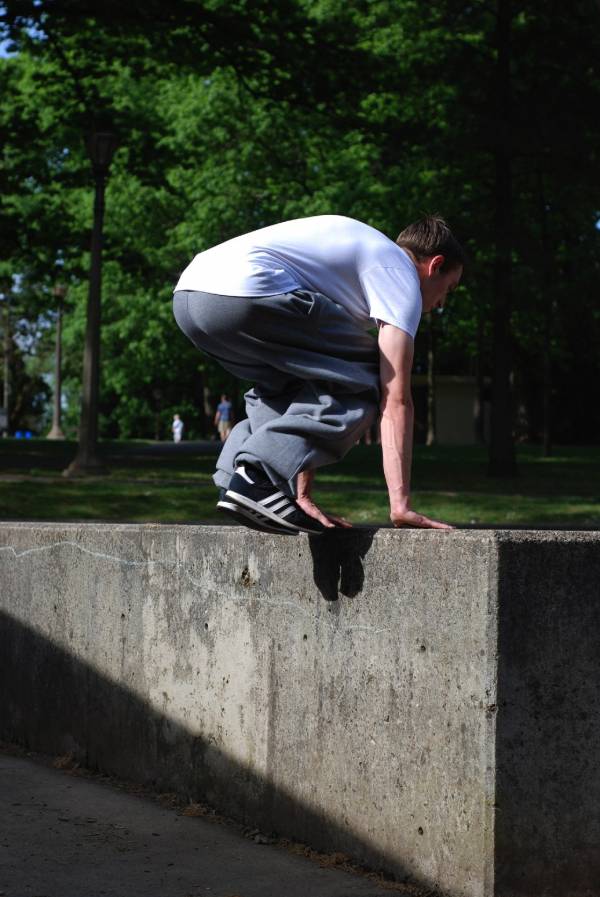
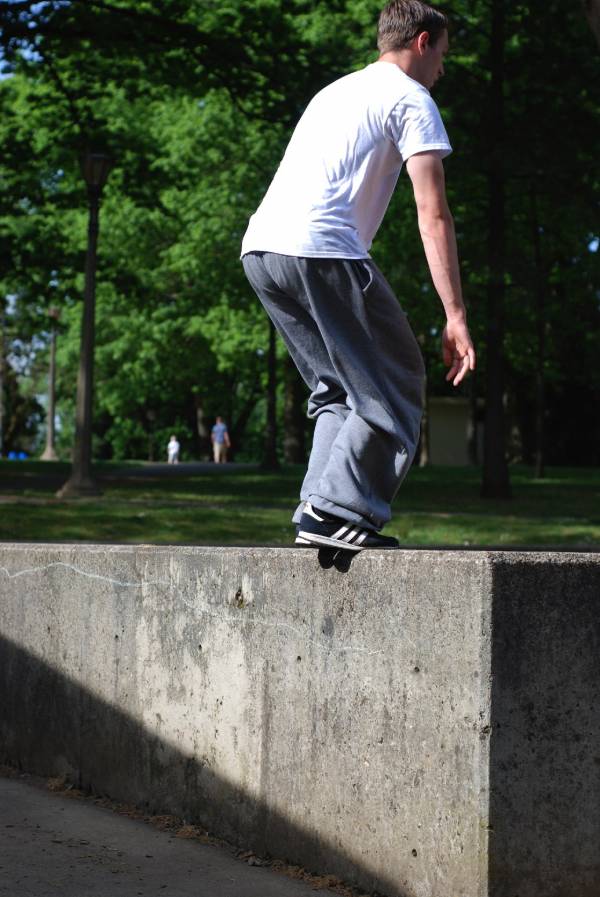
A few key pointers are that you want to place your palms flat, rather than just pushing through your fingertips and you also want to shift your shoulders to be stacked directly over your hands. Obviously, you’ll want to spread your arms wide enough that your feet can land between your hands without banging your knees into your elbows. That hurts.
To get back on the ground, place your hands next to your feet, lower your chest and kick your legs back to the floor. Touch your shoes to the ground and then hop right back onto the top as quickly as you can, exploding through your legs and arms simultaneously.
3. Plyo Step-up
Step-ups are a basic lower-body strength-building exercise that I’m sure you’ve done at one point in your athletic career. Place one foot on top of a bench or stair, shift your weight forward onto that leg and then stand up fully. Easy.
To make it plyometric, all you have to do is add a hop at the top of the step-up. Push extra hard through your weight bearing leg so you catch some air. Drive your free knee upward, and swing the opposite arm forward to maximize your momentum. Land back on the obstacle with the same leg you kicked off from, and then lower back down to the ground. Switch legs and repeat on the opposite leg.
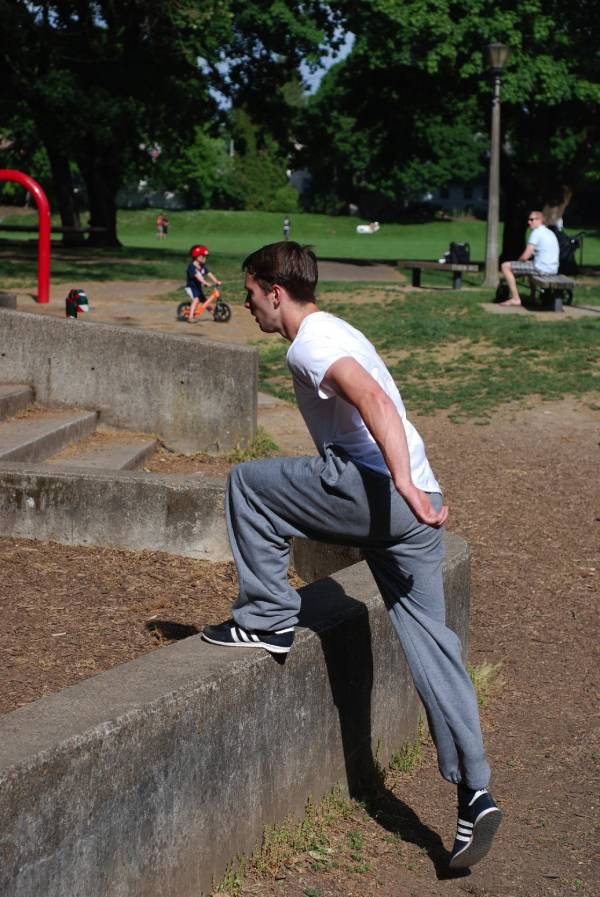
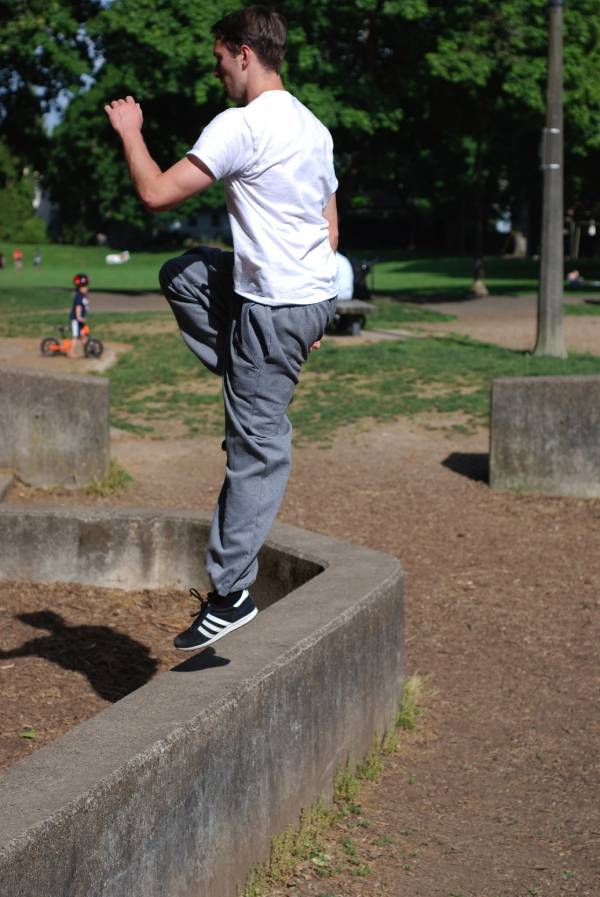
The more powerfully you can pump your opposite arm and leg, the greater air time you’ll catch. Plus, that motion prepares you for bounding upward from one leg to the other if you were jumping up a series of higher and higher obstacles. Think of it as preparation to stride with a vertical component – up a hill or stairwell for instance.
A good cue that will help you improve in any plyometric training is to imagine the floor being a hot stovetop. Touch and go. Make contact with the ground but then hop off as soon as you can to avoid getting burnt.
Time to fly, Superman. Get after it!






